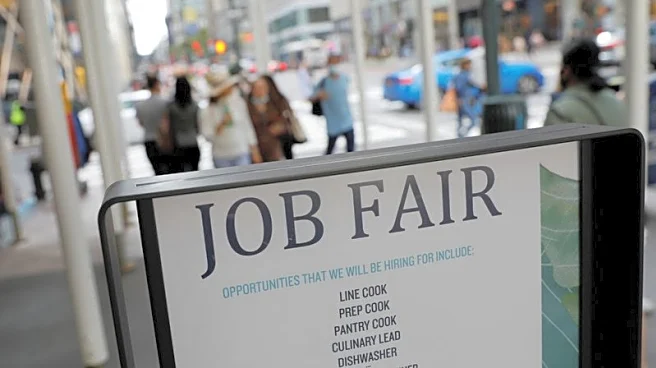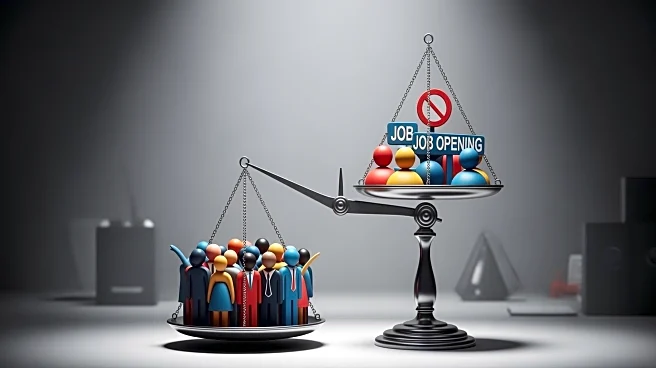What's Happening?
The U.S. government shutdown has resulted in the absence of the latest jobs report, leaving a gap in official economic data. Despite this, private sector reports indicate a troubling picture for the labor
market. According to data from ADP, the private sector lost 32,000 jobs in September, missing expectations. Revelio Labs reported a significant decline in job openings, with a 17.2% year-over-year drop, particularly affecting the professional and business services industry. Additionally, Challenger, Gray & Christmas data shows that U.S. employers have announced plans to cut 946,426 jobs this year, the highest since 2020. Hiring plans are also at their lowest since the Great Recession, with a 58% decrease compared to last year.
Why It's Important?
The current labor market conditions have significant implications for the U.S. economy. The decline in job openings and increased job cuts suggest a cooling labor market, which could impact consumer confidence and spending. This situation poses challenges for the Federal Reserve as it balances the need for rate cuts to stimulate the economy against the risk of a recession. The slowdown in hiring, particularly in the retail sector, could affect seasonal employment and overall economic growth. Businesses and investors are likely to remain cautious, delaying new projects and investments due to heightened uncertainty.
What's Next?
As the government shutdown continues, the absence of official economic data may lead to increased reliance on private sector reports to gauge the labor market's health. The Federal Reserve's upcoming decisions on interest rates will be closely watched, as they could be influenced by the labor market's performance. Businesses may continue to adjust their hiring and investment strategies in response to economic conditions, potentially leading to further job cuts or hiring freezes. The situation underscores the need for a resolution to the government shutdown to restore the flow of critical economic data.













